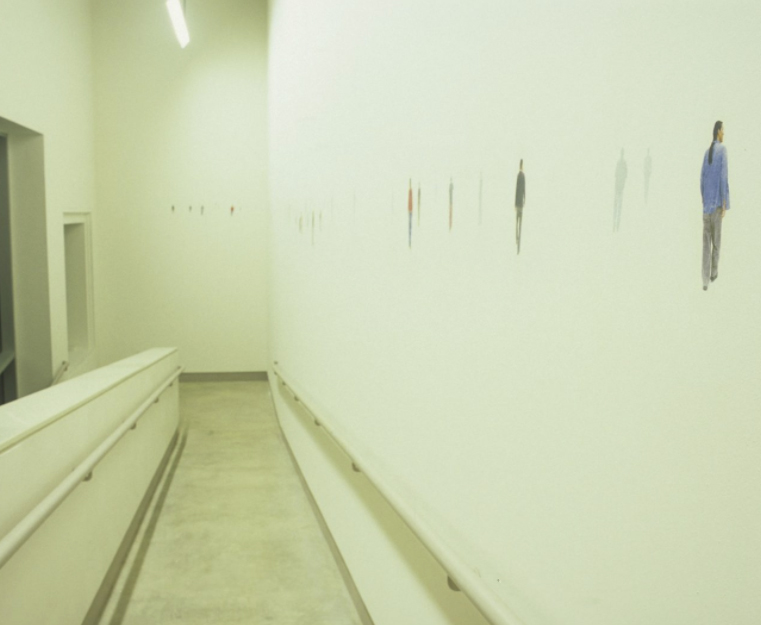Kimowan Metchewais’s Search for Visual Sovereignty
For the 2002 installation Without Ground, the Cree artist Kimowan Metchewais transferred dozens of small photographic self-portraits to the white walls of the Institute of Contemporary Art (ICA) at the University of Pennsylvania. The full length likenesses were posed in the ICA’s Ramp Space as if they were searching the empty expanse for something hidden from both artist and viewer. By cleverly using scale and gently fading some of the photo transfers, Metchewais, who at the time went by his stepfather’s surname, McLain, created the illusion of figures receding into space. Treating the walls of the museum as the “ribcage of a living animal,” he felt that his photographs were like “tattoos etched onto the bones of the beast,” anticipating their burial within the institution’s architectural memory, covered by future layers of accumulated paint.
More than a decade later, in 2014, the Omaskêko Cree artist Duane Linklater meticulously scraped small layers of paint away from the ICA’s walls, creating stratified craters in search of the installation. The effort to uncover these photographic traces was akin to a search for Metchewais himself, an attempt to connect with the artist who had passed away only a few years earlier, in 2011. The search for evidence was forensic, replicating the investigatory nature of Metchewais’s wandering figures. “I think North America is a crime scene,” Metchewais said of Without Ground in 2006. “I hate to say it, but what happened to the land and people here was/is a crime. People today don’t see that. They understand it, they know it, but it doesn’t seem to mean that much to them. To me, it means a lot, in many ways.” The white museum wall became a site on which to consider the theft of Indigenous land evoked by the installation’s title, an example of the ways in which Metchewais’s photography rearticulates colonial memory. His work explores the ground, aesthetic and territorial, on which contemporary Native art and communities might stand, and his images propose a new intellectual space that exceeds the mere subversion of stereotype.


